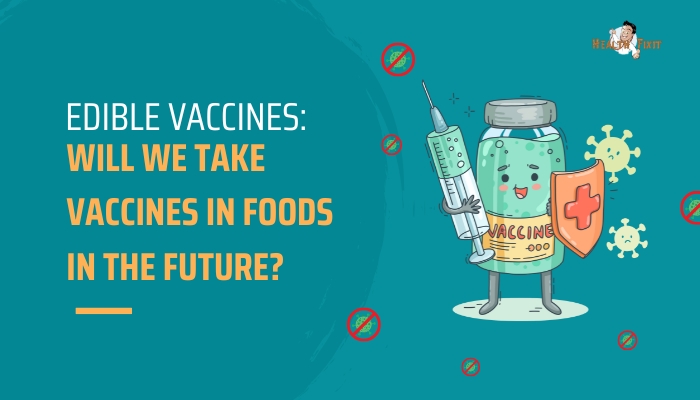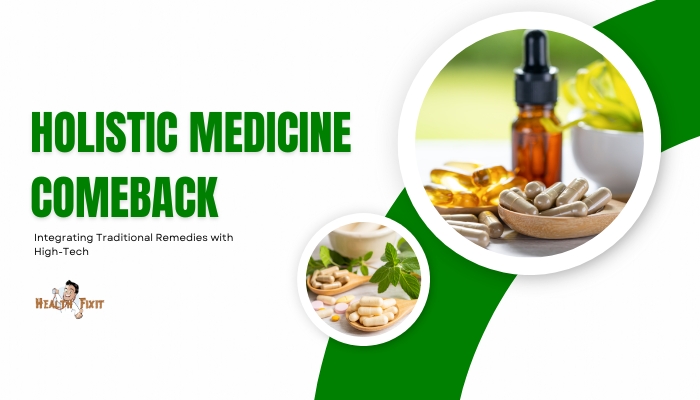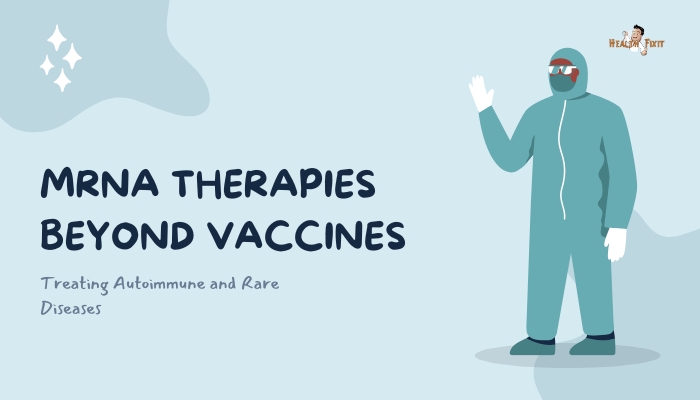Introduction
Scientists have long sought more convenient, stable, and accessible vaccine delivery approaches. Traditional injections and cold-chain storage complicate distribution
, especially in low-resource settings. Now, researchers are pursuing “edible vaccines,” an innovative idea in which plants—such as bananas
, tomatoes, or potatoes—are genetically modified to produce immunizing antigens. People could theoretically gain immunity by eating these plant-based products rather than receiving shots.
Although still in development, edible vaccines could simplify disease prevention, reduce costs, and improve global immunization coverage
. This article explains how these vaccines work, their advantages and challenges, and whether they may become a realistic alternative to needles in the future.
The Concept of Edible Vaccines
Defining Edible Vaccines
An edible vaccine is a genetically engineered plant or plant-derived food that contains a protein antigen from a pathogen—such as a virus or bacterium—that the immune system can recognize. When consumed,
parts of this protein survive digestion (at least partially) and stimulate an immune response in the gut-associated lymphoid tissue.
Ideally, the body forms protective antibodies against the target pathogen without requiring injections. This immunological effect would equip the person to resist future infections.
Why Plants?
Plants are appealing vaccine “factories” because they:
- Reproduce Proteins: Transgenic plants can be made to express foreign genes coding for microbial or viral antigens.
- Cost-Effective: Growing plants in greenhouses or fields might be cheaper than producing and purifying proteins in specialized bioreactors.
- Storage Stability: Dried plant tissues or seeds could maintain antigen stability at ambient temperatures, reducing cold-chain dependency.
- Oral Delivery: Oral immunization could eliminate needles, syringes, and trained personnel, simplifying large-scale vaccination in remote regions.
Early Research
Edible vaccine concepts emerged in the early 1990s. Investigators explored potatoes or tomatoes modified to express antigens for diseases like hepatitis B or diarrhea-causing bacteria.
Volunteers who ate these raw or partially cooked foods developed modest antibody responses. Although preliminary
, these trials suggested that the approach, while feasible, needed refinement to boost immunogenicity and confirm protective efficacy.
How Edible Vaccines Are Developed
Genetic Modification Steps
Creating an edible vaccine typically involves:
- Gene Selection: Identify a pathogen’s antigenic protein (e.g., a viral surface protein).
- Gene Cloning: Insert the gene into a plant-compatible expression vector (often a plasmid).
- Plant Transformation: Transfer the vector into plant cells via Agrobacterium tumefaciens infection (for dicot plants) or biolistics (“gene gun”) for monocots and other species.
- Regeneration: Grow transformed cells into full plants under sterile tissue culture. Once matured, these plants produce seeds or vegetative tissues that contain the antigen.
- Propagation: Seeds from these plants can be multiplied, enabling large-scale production of the vaccine.
Enhancing Antigen Expression
Plant cells do not always express foreign proteins efficiently. Scientists optimize codon usage for plants, add strong plant promoters,
or use chloroplast transformation (inserting genes into the chloroplast genome) to achieve higher yields.
Some labs also target the antigen to plant compartments that help preserve it from degradation (e.g., chloroplast or endoplasmic reticulum). The resulting expression levels critically influence the eventual immunogenic dose per serving.
Downstream Processing
Depending on the approach, the final vaccine might be:
- Fresh Plant Tissue: e.g., raw potatoes or fruits. However, raw produce may degrade quickly and vary widely in antigen content.
- Freeze-Dried Powder: Leaves or seeds can be ground into stable powder, standardizing dosage.
- Partially Processed Foods: Some heat or mechanical treatments can reduce microbial contamination. The challenge is to preserve the antigen’s structure.
Potential Advantages of Edible Vaccines
Needle-Free Immunization
For many, fear of needles and the logistic complexities of injection-based campaigns pose barriers to vaccination. Edible vaccines, if reliable, would bypass these challenges, enabling mass immunization with fewer specialized resources.
Lower Production Costs
Traditional vaccine manufacturing depends on expensive fermenters, cell cultures, or egg-based production lines. In contrast, transgenic crops could be cultivated on farmland or in large-scale hydroponic systems. With minimal purification, the cost per dose could drop significantly once stable high-yield lines are established.
Simplified Distribution
Edible vaccines might be stored at room temperature as dried plant material or seeds. This eases cold-chain demands, a major expense and logistical bottleneck. Vaccine programs in tropical or rural regions would benefit from the simplified supply chain.
Mucosal Immunity
Oral vaccines can provoke both systemic immunity (IgG) and local mucosal immunity (secretory IgA) in the gastrointestinal tract.
Mucosal IgA may help block pathogen entry at the gut level, crucial for gastrointestinal infections. This dual immunity might offer broader protection than typical injectable vaccines.
Challenges to Real-World Implementation
Low Antigen Expression
One persistent hurdle is obtaining sufficient antigen in each plant serving. Many plant lines yield minimal protein. Achieving a consistent vaccine dose per piece of fruit or leaf is difficult. Solutions include:
- Refined Genetic Constructs: Enhanced promoters or chloroplast transformation to maximize protein yield.
- Plant Varieties: Using species with high protein content or stable expression in edible parts, e.g., maize kernels or banana fruit.
- Dosage Standardization: Potentially milling plant tissue into a uniform powder to measure doses precisely.
Antigen Stability and Processing
The oral route exposes proteins to digestive enzymes and stomach acid, which may degrade them. Strategies:
- Encapsulation: Using protective microspheres or plant cell walls to shield antigens until they reach the gut.
- pH-Resistant Formulations: Screening or engineering robust antigen sequences that survive mild cooking or acidic pH.
- Consumption Method: Some early trials had participants ingest raw potatoes, which limited participant acceptance. More palatable and stable forms are needed for widespread adoption.
Immune Dosing and Tolerance
Repeated low-dose exposure can sometimes induce oral tolerance, dampening rather than enhancing immunity.
Researchers must design vaccination regimens that deliver a strong immunostimulatory signal, possibly including mucosal adjuvants or prime-boost schedules with conventional injections.
Regulatory and Public Acceptance
- GMO Controversies: Edible vaccines use genetically modified plants, triggering concerns about environmental release, cross-pollination, or consumer hesitancy.
- Quality Control: Guaranteeing uniform antigen levels in each batch of produce is complex. Regulatory bodies demand precise labeling, potency tests, and consistent manufacturing standards.
- Perception: People might be wary of “medicine in food.” Clear communication and safety data will be crucial for acceptance.
Ongoing Projects and Success Cases
Hepatitis B
One of the earliest targets for edible vaccines was hepatitis B surface antigen. Potatoes, tomatoes, and lettuce have been engineered to express this antigen.
Pilot human studies found that ingestion led to modest antibody responses, though not as robust as desired. These trials paved the way for improved vectors and adjuvant strategies.
Norovirus
Norovirus causes acute gastroenteritis. Researchers engineered transgenic potatoes or other plants with norovirus capsid proteins. Preliminary tests in volunteers indicated immune responses. Achieving consistent dosage and real-world efficacy remains under investigation.
Diarrhea and Cholera Vaccines
Cholera toxin B subunit (CTB) expressed in plants is being explored. In model systems, ingestion of plant-based CTB can induce protective mucosal immunity.
This holds promise for controlling cholera and other enteric bacterial infections in regions where water sanitation is limited.
Veterinary Applications
Edible vaccines might also address livestock diseases. For instance, engineered alfalfa or corn that immunize farm animals against foot-and-mouth disease or porcine circovirus might reduce costly vaccination programs.
Veterinary success could validate the approach before widespread human application.
Future Directions in Edible Vaccine Research
Multi-Target Foods
Advanced transformations could incorporate multiple antigens into a single plant, providing immunity to multiple diseases. If feasible,
families might eat a small portion of transgenic produce periodically to maintain broad protection. This synergy requires balancing expression levels and avoiding antigenic interference.
Tissue-Specific Production
Some labs investigate expressing vaccine antigens predominantly in plant seeds or tubers for stable, high accumulation. Seeds have lower water content, potentially prolonging antigen shelf life. Meanwhile, tubers like potatoes can be stored and transported relatively easily.
Synthetic Biology Approaches
Synthetic biology merges gene editing with rational design to optimize expression cassettes, build standardized “antigen modules,” and automate plant engineering.
Tools like CRISPR could reduce unwanted plant metabolic pathways or enhance immunogenic moieties, streamlining vaccine production.
Combination with Other Vaccine Platforms
Edible vaccines might complement, rather than replace, existing immunization. They could function as a booster or reinforcing dose,
especially in remote areas. For instance, an initial injected polio vaccine prime, followed by an edible polio vaccine boost, might reduce polio re-emergence. This synergy addresses coverage gaps and logistical burdens.
Potential Impact on Global Health
If edible vaccines mature into a reliable technology, they could revolutionize how we address infectious diseases:
- Lowering Barriers
- Easy distribution, minimal medical infrastructure, and needle-free administration can empower remote communities.
- Easy distribution, minimal medical infrastructure, and needle-free administration can empower remote communities.
- Rapid Response
- In an outbreak scenario, producing seeds or transgenic plants (if a seed bank is prepared) might accelerate local vaccine supply.
- In an outbreak scenario, producing seeds or transgenic plants (if a seed bank is prepared) might accelerate local vaccine supply.
- Cost Savings
- Freed from many steps in conventional vaccine manufacturing, health agencies can scale up immunization with reduced expense, pushing coverage even in low-income regions.
- Freed from many steps in conventional vaccine manufacturing, health agencies can scale up immunization with reduced expense, pushing coverage even in low-income regions.
- Integration with Agriculture
- Partnerships among biotech, agriculture, and public health groups could transform farmland into vaccine production fields for public good.
- Partnerships among biotech, agriculture, and public health groups could transform farmland into vaccine production fields for public good.
Nevertheless, ensuring consistent yields, preventing contamination, and addressing cultural or regulatory hurdles require substantial collaboration among scientists, policymakers, and communities.
Patient and Consumer Perspectives
- Accessibility: Edible vaccines might eventually be distributed in the form of stable powders or seeds that individuals can grow at home, theoretically democratizing vaccine access.
- Taste and Acceptability: Early attempts with raw potatoes faced palatability issues. Researchers seek more appealing forms—like freeze-dried fruit snacks or milled cereal grains.
- Safety: The risk of overconsumption or unintended consumption by children or animals must be mitigated. Clear labeling and controlled distribution channels are important.
- Cultural Acceptance: Acceptance might vary. Some populations oppose genetically modified foods or prefer established vaccination norms. Education and transparent communication about benefits and safety data can build trust.
Conclusion
Edible vaccines remain an enticing yet still developmental concept, promising a simpler, needle-free, and potentially cheaper way to immunize vast populations.
Researchers have demonstrated proof of concept, producing modest antibody responses in humans from transgenic plant materials.
Challenges remain significant, including limited antigen yields, the complexity of regulating gene expression in crops, oral tolerance issues, and the need for rigorous standardization under strict regulatory frameworks.
However, as genetic engineering techniques, synthetic biology, and plant transformation methods progress, the outlook brightens.
If these hurdles can be overcome, edible vaccines could reshape the future of immunization—particularly in resource-limited settings—by delivering needed protection through everyday foods. By bridging agriculture and immunology, this approach might offer a new frontier in global health, addressing diseases from cholera to hepatitis, and possibly more. Time will tell whether we’ll one day see “vaccine bananas” or “immune-boosting tomatoes” on store shelves,
but the research momentum suggests that ingestible immunization strategies are far from science fiction—they’re a pioneering step toward universal disease prevention.
References
- Mason HS, Lam DM, Arntzen CJ. Expression of hepatitis B surface antigen in transgenic plants. Proc Natl Acad Sci U S A. 1992;89(24):11745–11749.
- Tacket CO, Mason HS, Losonsky G, et al. Immunogenicity in humans of a recombinant bacterial antigen delivered in a transgenic potato. Nat Med. 1998;4(5):607–609.
- Streatfield SJ. Plant-based vaccines for animal health and productivity. Annu Rev Anim Biosci. 2021;9:1–20.
- Chan HT, Daniell H. Plant-made oral vaccines against human infectious diseases—Are we there yet? Plant Biotechnol J. 2015;13(8):1056–1070.
- Bock R, Warzecha H. Solar-powered vaccines: light-triggered production of antigens in transplastomic plants. Trends Biotechnol. 2018;36(12):1175–1185.
- Rybicki EP. Plant molecular farming of virus-like nanoparticles as vaccines and therapeutics. Curr Opin Virol. 2020;40:1–8.
- Khandelwal A, Renneckar D, Howard JA. Improving yield of a thermostable subunit vaccine in plants through chloroplast transformation. Front Plant Sci. 2020;10:1683.
- Azegami T, Yuki Y, Kiyono H. Challenges in mucosal vaccines for the control of infectious diseases. Vaccine. 2014;32(14):1589–1596.
- Twyman RM, Schillberg S, Fischer R. Transgenic plants in the biopharmaceutical market. Expert Opin Emerg Drugs. 2005;10(1):185–218.
- Shanmugam S, Thangaswamy S, Theriappan P. Edible vaccines: An emerging concept in immunization. Adv Biotech. 2019;19(1):7–11.
- Rosales-Mendoza S, Nieto-Gómez R, Angulo C. A perspective on the use of algae as bioreactors for influenza and other vaccines. Hum Vaccin Immunother. 2020;16(4):959–971.
- Paul M, Ma JK. Plant-made pharmaceuticals: leading products and production platforms. Biotechnol Appl Biochem. 2011;58(1):58–67.







